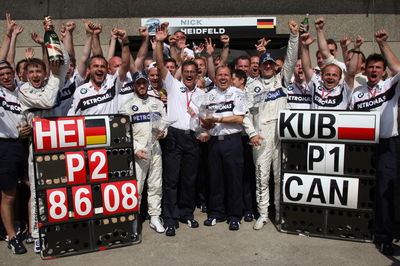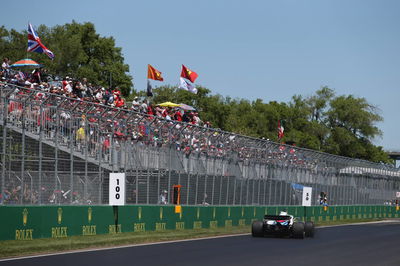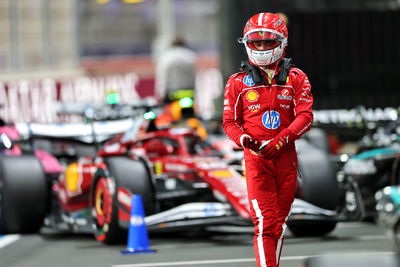Remembering Kubica’s F1 win 10 years on in Canada
On 10 June 2007 Robert Kubica was flying - literally - as he hurtled towards a concrete barrier at 230km/h inside the cockpit of his Formula 1 car.
Contact with the rear of Jarno Trulli’s Toyota on lap 27 of the 2007 Canadian Grand Prix sent Kubica veering off track and head-on into wall at the Circuit Gilles Villeneuve’s flat-out sprint leading to the hairpin. But the brutal impact - registered at 75G - would not mark the end of the Pole’s unwanted rollercoaster ride.
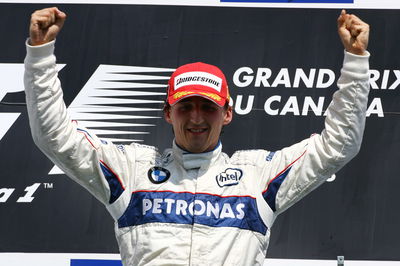
On 10 June 2007 Robert Kubica was flying - literally - as he hurtled towards a concrete barrier at 230km/h inside the cockpit of his Formula 1 car.
Contact with the rear of Jarno Trulli’s Toyota on lap 27 of the 2007 Canadian Grand Prix sent Kubica veering off track and head-on into wall at the Circuit Gilles Villeneuve’s flat-out sprint leading to the hairpin. But the brutal impact - registered at 75G - would not mark the end of the Pole’s unwanted rollercoaster ride.
He violently bounced off the wall and back onto the race track, flipping a full rotation as he slid into the path of onrushing drivers, before coming to a rest side-on against the armco on the far side - with what was left of his car resembling little more than the survival cell. Kubica’s feet were even visible through the completely destroyed front-end of his BMW Sauber F1.07.
The worry and shock was written on the expression of the faces of Sauber team members on the pitwall as marshals and F1’s medical extraction team worked quickly and efficiently to remove Kubica from his car. Miraculously, Kubica escaped the wreckage with *just* a sprained ankle and concussion - a statement of F1’s progress with regards to safety in the modern era.
Kubica would have been forgiven for taking a cautious approach or losing a fraction of his speed and confidence when returning from such a horrific crash. Other top drivers have struggled to retain the same level of competitiveness following huge accidents, including Heikki Kovalainen after his massive shunt during the 2008 Spanish Grand Prix a month earlier. But Kubica’s terrifying accident would ultimately act as the precursor to propelling him to the top of the F1 standings at the same venue 12 months later.
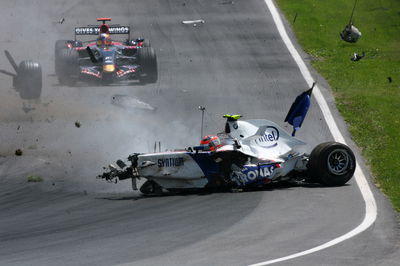
BMW Sauber followed up a strong 2007 campaign with even greater competitiveness heading into 2008. Kubica had already racked up three podium appearances in the opening six races before the F1 circus rocked up to Montreal in June. Despite the memories of the events from the previous year still being fresh in his mind, Kubica was not fazed on his return to the scene of his accident for the first time.
And any lingering doubts were well and truly quashed when Kubica recorded the second-fastest time in both practice sessions on Friday as BMW Sauber underlined its raw speed and potential. He went on to secure a front-row grid spot in qualifying, albeit 0.6s down on Lewis Hamilton’s poletime.
Hamilton maintained position over Kubica as the lights went out and quickly built up an advantage of over five seconds to the BMW Sauber driver. The Briton extended that gap by a further two seconds as he commanded the opening stint and threatened to replicate his dominant performance of the previous year.
But when Adrian Sutil pulled off to the side of the circuit at Turn 3 with a gearbox failure with 55 laps to go, the entire complexion of the race was about to change. It looked as though the incident would pass without the need for a Safety Car, but when the German’s Force India caught fire a few laps later, Safety Car driver Bernd Mayländer was called into action.
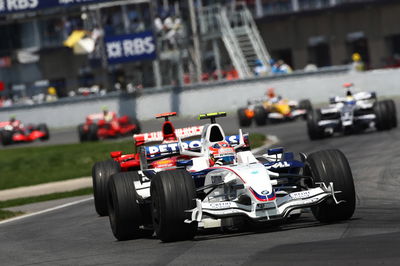
That negated Hamilton’s early hard work and led to the top five runners all diving into the pitlane once it was declared open on Lap 19. Hamilton emerged from his box behind Raikkonen’s Ferrari having taken on more fuel than the Finn but appeared not to have seen the red light at the end of the pitlane as he careered into the back of the reigning world champion. The bizarre moment put both contenders out on the spot.
When the pitlane opened a few seconds later, Kubica was handed a clear run to take advantage and he duly obliged. Two of his main rivals may have been out of the race, but Kubica still had plenty to do having returned to the circuit in 10th on the road - though handily heading the pack of drivers to have already made a pit stop.
Running his fuel to the absolute limit, Heidfeld remained out and opened up a 26s buffer to his teammate, which proved enough for the German to hold onto the lead as he re-appeared on track marginally ahead of Kubica after taking on enough fuel to see him to the end of the race.
With Kubica still requiring another service stop for fuel, it was vital to pull off an early pass on his heavier-fuelled teammate if he was to have any chance of beating Heidfeld to an unlikely maiden F1 win. Having exited the final chicane right on the back of Heidfeld’s gearbox on the next tour, he made a critical move stick by taking the inside line at Turn 1.
For the next series of laps, Kubica pushed to the absolute limits of man and machine in his bid to open up a big enough margin over Heidfeld. The display of relentless qualifying-esque laps ultimately paid off as he rejoined in front of Heidfeld following his second stop with 22 laps to go. He controlled the closing stages to lead home a historic BMW Sauber one-two across the line and was greeted by the following words from his race engineer: “You are leading the championship now.”
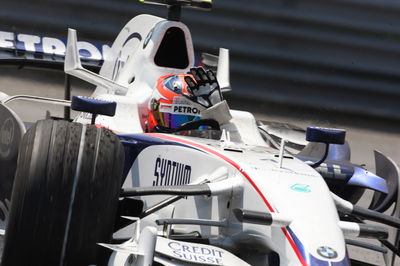
2009 brought about a radical overhaul to F1’s aerodynamic regulations as BMW Sauber began its gradual slide down the constructors’ standings, with Kubica managing just one podium finish across the season. A switch to Renault for 2010 led to more success and three further rostrum appearances - including a best result of second-place in Australia - before his promising single-seater career was cut-short when he suffered life-threatening injuries in a terrible rally crash on the eve of his second season with the French manufacturer.
After a period of rehabilitation, Kubica contested a further spell in rallying and tried out GT racing with the prospect of returning to the cockpit of an F1 car seeming nothing more than a pipe dream. Against all the odds, Kubica received his chance to get back behind the wheel of a modern day F1 car in a series of tests for Renault and Williams in 2017 after a six-year spell on the sidelines.
His performances saw him become a leading contender to take Felipe Massa’s Williams seat for 2018 following the Brazilian’s retirement but he ultimately lost out to rookie Sergey Sirotkin and was instead handed a reserve driver role with the Grove-based outfit. That in turn led to Kubica’s first appearance in a F1 race weekend since the 2010 Abu Dhabi Grand Prix as he participated in Friday practice ahead of May’s Spanish Grand Prix and the first in-season rest of 2018 a few days later.
This weekend things have almost come full circle for a man who returns to the Montreal paddock once more, exactly a decade (to the day on Friday 8th) since his sole F1 win.
